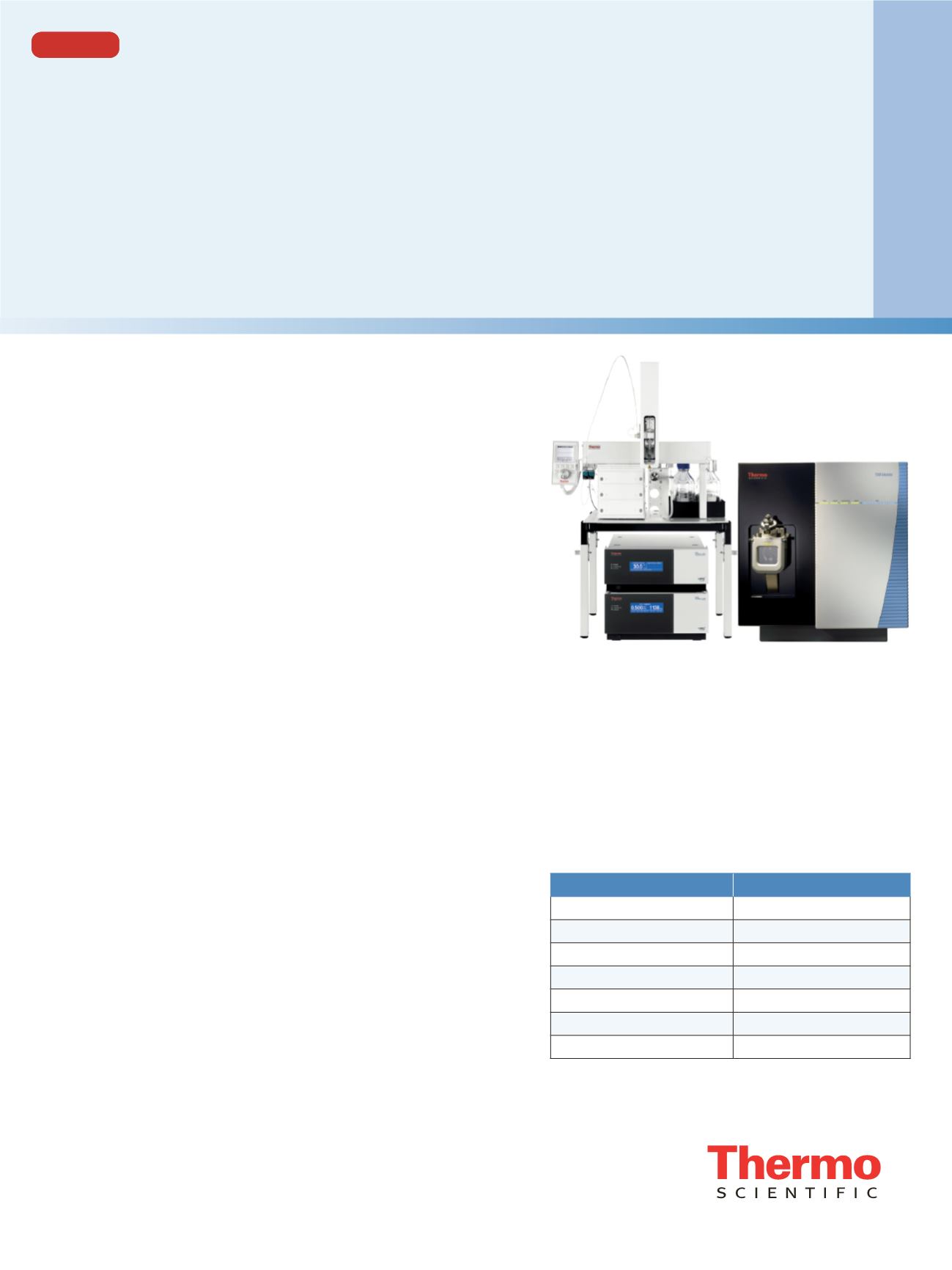

LC-MS/MS Analysis of EtG and EtS in
Dilute Urine on the TSQ Endura Triple
Quadrupole MS
Kristine Van Natta, Marta Kozak, Thermo Fisher Scientific, San Jose, CA
Application Note 602
Key Words
EtG, EtS, ethyl glucuronide, ethyl sulfate, ion pairing, TSQ Endura,
DHAA (dihexylammonium acetate)
Goal
To develop a high-performance liquid chromatography-tandem mass
spectrometry (HPLC-MS/MS) method for the forensic toxicological
analysis of EtG and EtS in urine with limits of quantitation (LOQs)
of 100 and 50 ng/mL, respectively, using only urine dilution as sample
preparation.
Introduction
Ethyl glucuronide (EtG) and ethyl sulfate (EtS) are
long-term biomarkers for ethanol consumption. Although
they are minor metabolites of ethanol, their longer
half-lives make them useful for detection of past alcohol
use in forensic settings. These compounds are highly polar,
which makes them retain poorly on most reversed-phase
HPLC columns and elute on or near the chromatographic
solvent front. This results in poor peak shape and large
matrix effects. Here an ion-pairing reagent was used to
retain these compounds on an HPLC column long enough
to move them off the solvent front. This enabled better
peak shape and less matrix interference.
Methods
Sample Preparation
Equal volumes (25 µL) of urine and internal standard
(5,000 and 500 ng/mL of EtG-
d
5
and EtS-
d
5
, respectively)
were mixed and then diluted with 450 µL of water. For
analysis, 30 µL were injected into the HPLC-MS/MS.
Liquid Chromatography
Chromatographic separations were performed under
gradient conditions using a
Thermo Scientific ™ Dionex ™ UltiMate ™ 3000 RSLC system and
Thermo Scientific Dionex UltiMate 3000 OAS.The analytical column was a
Thermo Scientific ™ Hypersil GOLD ™ column (50 x 3 mm, 5 μm particle size, catalog #25005-053030).The column
was maintained at room temperature. The injection
volume was 30 μL. Mobile phases A and B consisted of
5 mM dihexylammoniumacetate (TCI America
™
) ion-pairing
reagent in
Fisher Chemical ™ waterand
acetonitrile,
respectively. The flow rate was 1 mL/minute, and the
total run time was 5 minutes.
Mass Spectrometry
MS analysis was carried out on a
Thermo Scientific ™ TSQ Endura ™ triple-stage quadrupole mass spectrometerequipped with a Thermo Scientific
™
Ion Max NG source
and heated electrospray ionization (HESI-III) probe (Figure 1).
Table 1 shows the mass spectrometer source parameters.
Table 1. TSQ Endura MS source parameters
Parameter
Value
Spray Voltage
3500 V
Sheath Gas
60 Arb
Aux Gas
20 Arb
Sweep Gas
0 Arb
Ion Transfer Tube
380 ˚C
Vaporizer
475 ˚C
Divert Valve
1.2–2.5 min
Figure 1. UltiMate 3000 RSLC system and TSQ Endura mass
spectrometer



















